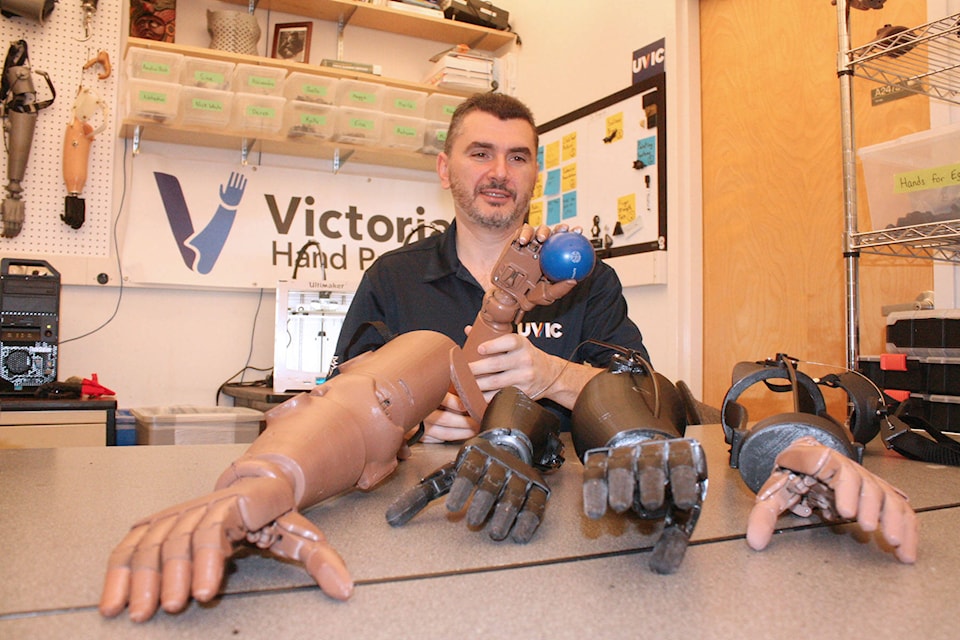Squeeze your shoulders and suddenly the prosthetic hand attached to your arm closes in a grip.
With a custom-made prosthetic from the Victoria Hand Project and you can pick up anything from a piece of cheese to a hammer, and hopefully one day, grab the handlebar on a bike.
“Unfortunately we can’t control what the end user does, we’ve heard stories about people using them on bikes, but we don’t make [or recommend] these for bicycling yet,” says Nick Dechev, executive director of the Hand Project and also the director of Biomedical Engineering at the University of Victoria.. “Hopefully that’s down the line because cycling is a primary source of transportation in developing countries.”
VHP’s mandate is simple, to give people in developing countries access to prosthetics. Already, by working with engineers in those countries, the project has fit 90 people with prosthetics in Guatemala, Nepal, Cambodia, Haiti, Ecuador and Egypt. They’ve fit a handful of locals here in Victoria and Canada as well.
With their $250,000 Google Impact Canada grant (won in 2017), VHP are now targeting another 280 hands in the next few years.
“We want to have an Ikea style of prosthetics,” Dechev said. “We have partners in those countries and the idea is [we share our knowledge with them] so they can build the hands themselves, and we actively support them.”
Dechev started the project on his own in 2013, based on a metal hand he crafted way back in 1999. With a pair $70,000 grants from Grand Challenges Canada, and some smaller grants, it allowed VHP to expand initially into Cambodia and Nepal. Unlike a lot of research projects that end in a few high-fives and go into storage with other projects, this one spun off to become a project unto itself.
What makes the hands so effective is the cost. At the same time bionic hands are coming on to the market for exorbitant prices (more than $10 thousand), VHP is producing a fitted, light weight prosthetic that can grip an object for the cost of $110.
“We found that amputees are often in need as it limits work opportunities,” Dechev said.
When a client is fitted their arm is scanned with a 3D scanner and then a cast is created. The prosthetic fits around that, with a wrist and socket attached, as well as a mechanical cable. It’s all built in one of VHP’s 3D printers.
“It’s a blend between light duty and cosmetics,” Dechev said.
In Canada, for example, someone with an amputated arm has access to the classic hook prosthetic, should it last three to five years. The hook has it’s positives, but overall it has nothing on a fitted VHP prosthetic, Dechev said.
How VHP makes it work is by linking the prosthetic to a harness that wraps around the shoulders. The harness pulls a cable (the same kind used in a bicycle brake) when the user flexes their shoulders. It then activates the hand, which will close the grip, including putting the thumb and pointer finger together.
It’s so useful, the stories they’re hearing from users in foreign countries are enough to scare Dechev, such as the stories of people cycling.



